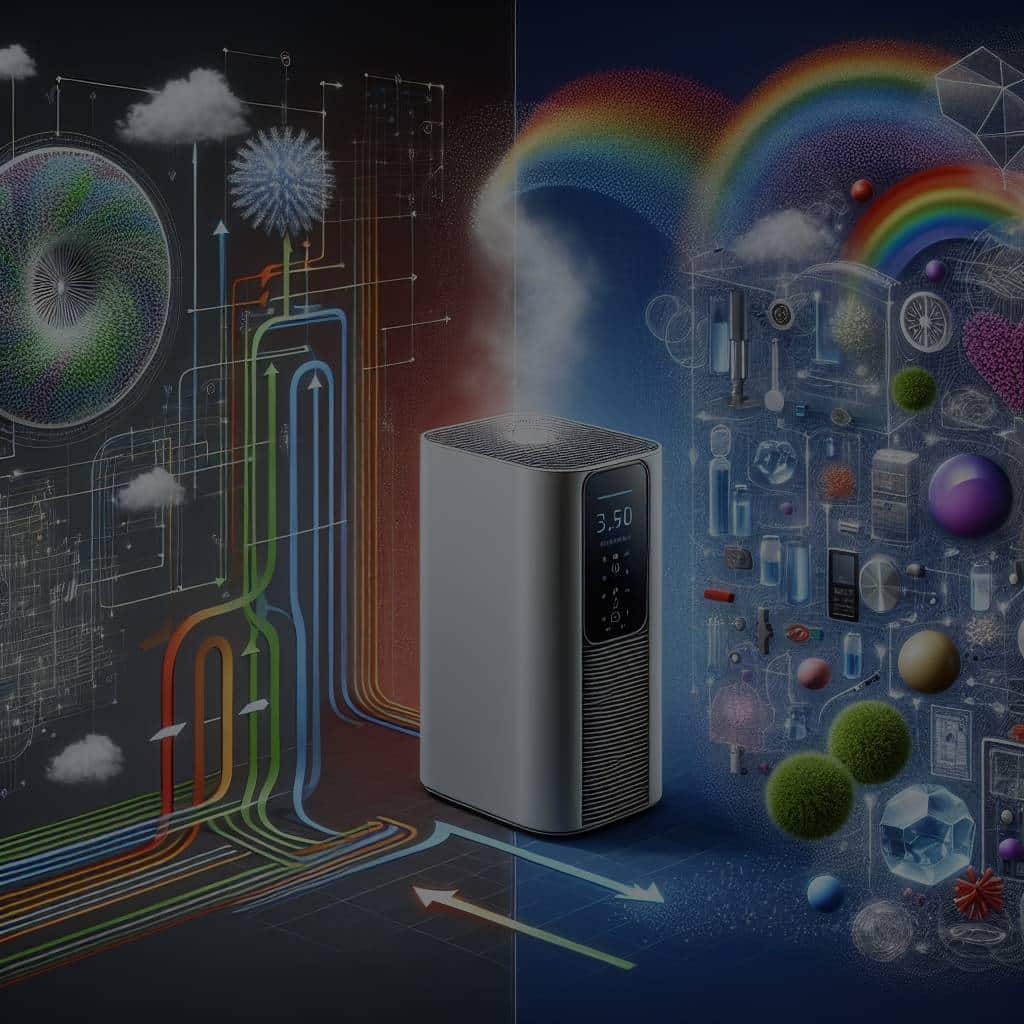How Are Advanced Oxidation Processes Impacting Air Purification Technology?

Advanced Oxidation Processes (AOPs) are becoming increasingly popular in the global quest for cleaner, more sustainable environments. These advanced techniques have emerged as a potent solution for air purification, making significant strides in the treatment of airborne pollutants. So how, exactly, are these AOPs shaping the future of air purification technology? Let’s delve into the details.
Understanding the Basics of Advanced Oxidation Processes
Before we dive into the role AOPs play in air purification, it is necessary to understand what they are and how they function. Advanced Oxidation Processes, often abbreviated as AOPs, are a set of techniques used primarily in water and air treatment. These processes employ a combination of ozone, hydrogen peroxide, and ultraviolet light, among other oxidants, to facilitate reactions that can effectively degrade pollutants.
Additional reading : Discover the hidden treasures in the gods mystery box
AOPs have been extensively reported in scientific literature, with scholars from varying fields contributing to the continued understanding and optimization of these processes. A simple search on Crossref or Google Scholar will reveal the extensive body of research surrounding this subject.
The Role of AOPs in Water Treatment
One of the significant areas where AOPs have shown considerable efficiency is in the realm of water treatment. Several treatment methods, including Fenton’s reaction and the use of titanium dioxide (TiO), are now regularly utilized in dealing with wastewater.
This might interest you : Can Virtual Reality Exposure Therapy Treat Phobias More Effectively?
Fenton’s reaction, for instance, employs a mixture of hydrogen peroxide and iron to generate hydroxyl radicals. These radicals are potent oxidizing agents that can degrade a wide range of organic pollutants. Meanwhile, TiO, a widely used photocatalyst, can also generate hydroxyl radicals upon irradiation with appropriate light.
The use of these AOPs in water treatment has revolutionized the way we deal with wastewater, enabling the removal of stubborn pollutants that were previously difficult to address.
Applying AOPs in Air Purification
But AOPs’ influence extends beyond just water treatment. Increasingly, these processes are being applied in air purification technology, with promising results. The photo-oxidation process, for instance, uses ultraviolet (UV) light in combination with a catalyst to break down pollutants in the air.
Among the most significant advancements in this area is the application of ozone-based AOPs for air purification. Ozone is a powerful oxidizing agent and, when used in combination with other AOPs, can degrade a wide range of air pollutants. Its use in air purification has been reported in several scientific journals, highlighting its efficiency in degrading pollutants such as volatile organic compounds and particulate matter.
Enhancing Efficiency with AOPs
Advanced Oxidation Processes hold the key to enhanced efficiency in air purification technology. By enabling the degradation of stubborn, hard-to-remove pollutants, these processes offer a more comprehensive approach to air purification.
The use of dye-based AOPs, in particular, has gained traction in recent years. A particular type of dye, known as photosensitizers, can absorb light and transfer the energy to oxygen molecules, resulting in the formation of reactive oxygen species. These species can then oxidize and degrade pollutants, thus purifying the air.
The Future of Air Purification: AOPs
The future of air purification technology is looking brighter, and much of that is due to the advancements made possible by AOPs. These processes are continually evolving, fueled by ongoing research and development efforts.
In the realm of scholarly research, a significant amount of work is being done to further refine these processes, making them more efficient and environmentally friendly. With the growing body of knowledge on AOPs, it is safe to say that the impact of these advanced processes on air purification technology will only continue to grow.
From wastewater treatment to air purification, Advanced Oxidation Processes are poised to play a significant role in our quest for a cleaner and more sustainable environment. As our understanding of these processes continues to grow, so too will their application and efficacy in improving air quality.
AOPs and Drinking Water Treatment
The impact of Advanced Oxidation Processes on water treatment has been profound, and the application of these processes in drinking water treatment cannot be overlooked. AOPs have significantly improved the safety and quality of drinking water. Key techniques such as the Fenton process and TiO photocatalysis are now regularly applied in treating drinking water.
The Fenton process, named after the scientist who discovered it, Henry John Horstman Fenton, utilizes hydrogen peroxide and iron to generate hydroxyl radicals. These radicals then act as powerful agents in oxidizing and degrading various organic pollutants present in drinking water.
On the other hand, TiO photocatalysis, another AOP, uses titanium dioxide as a photocatalyst under UV or visible light to create reactive species that can degrade pollutants. This process is particularly effective in removing harmful substances such as pharmaceuticals and endocrine disruptors, which are often resistant to traditional water treatment methods.
AOPs, particularly photo-Fenton processes, have also been proven to be effective in inactivating waterborne pathogens. They have shown significant promise in areas where access to safe drinking water is a challenge. Researchers continue to optimize these processes to make them more accessible and efficient, ensuring safe drinking water for all.
As evidenced by the numerous studies available on Google Scholar and Crossref, the application of AOPs in drinking water treatment is a growing area of research. Through the ongoing efforts of scholars and scientists worldwide, AOPs continue to evolve, becoming more efficient and environmentally friendly.
Conclusion: The Prominence of AOPs in a Sustainable Future
As we continue to grapple with the environmental challenges of our time, the importance of advanced oxidation processes in creating sustainable solutions cannot be overstated. AOPs have emerged as a robust tool in our fight against pollution, notably in the context of water and air purification.
The remarkable ability of AOPs to degrade stubborn pollutants has revolutionized wastewater treatment. Innovations like the Fenton process and TiO photocatalysis have played significant roles in treating resistant organic pollutants, making our water safer to consume and use.
Moreover, the application of AOPs in air purification technology has shown promising results. Ozone-based AOPs and the use of photosensitizers, in particular, present exciting possibilities for the future of air purification. The continual research and development in this field promise further advancements, making our air cleaner and healthier to breathe.
In conclusion, AOPs hold great potential in improving our environment. As our understanding of these processes deepens, and oxidation technologies become more efficient, the role of AOPs in our journey towards environmental sustainability will undoubtedly be pivotal. After all, a cleaner environment is not just a desire, but a necessity for our survival and future generations. The impact of AOPs on air and water purification is just the beginning, and we can expect even more exciting developments in the years to come.
